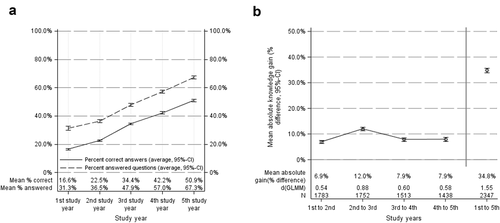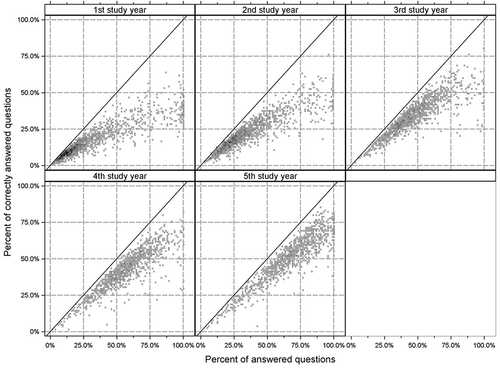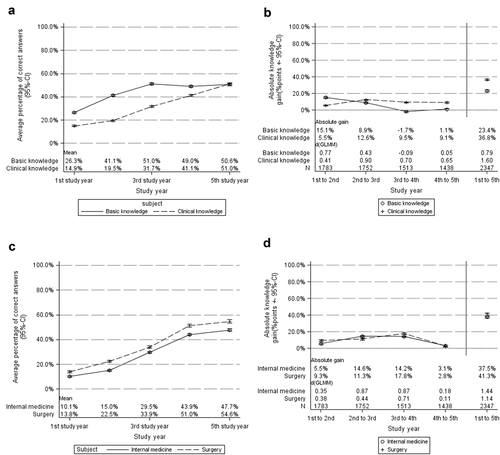Figures & data
Figure 1. Overview on the collected data. (A) Average percentage of answered questions (dashed line) and the average percentage of correctly answered questions (solid line) over time. Advanced students answer more questions, reflecting the student’s overall confidence in their knowledge. Simultaneously, also the percentage of correct answers increases. (B) Absolute knowledge gain (increase in correctly answered questions) between consecutive study years and for the whole curriculum. Absolute gain and calculated effect sizes (linear mixed model) are displayed, respectively

Figure 2. Relation between the number of answered questions and the percentage of correctly answered questions. Data is shown per study year. Darker grey to black color indicates increased density of data points. The straight line marks the maximal reachable percentage of correct answers given the percentage of answered questions. The data shows that students, while getting more confident in answering questions. Over time, students increase their knowledge and give more correct answers with proceeding study years

Figure 3. Comparison of major curricular subjects. (A) Percentage of correctly answered questions pooled for basic knowledge and clinical subjects, respectively. (B) Knowledge gain and effect sizes (dGLMM) per study year and the total course of study. (C) and (D) display the same information for comparison of internal medicine and surgery, respectively

